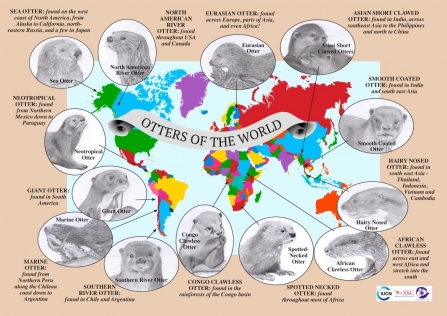Following my first Otter sighting, I returned to the River Taff many times over the following three months but frustratingly, as much as tried, I failed to spot another.
As stated in my previous blog, I reminded myself that “to successfully find and watch wildlife, it is very important to research your subject, especially to be able to identify field signs”. Inspired by my first Otter sighting, I concluded I “Otter” learn more and my search for information on Otters began.
One of the first things I discovered was that there are 13 species of Otters worldwide.







